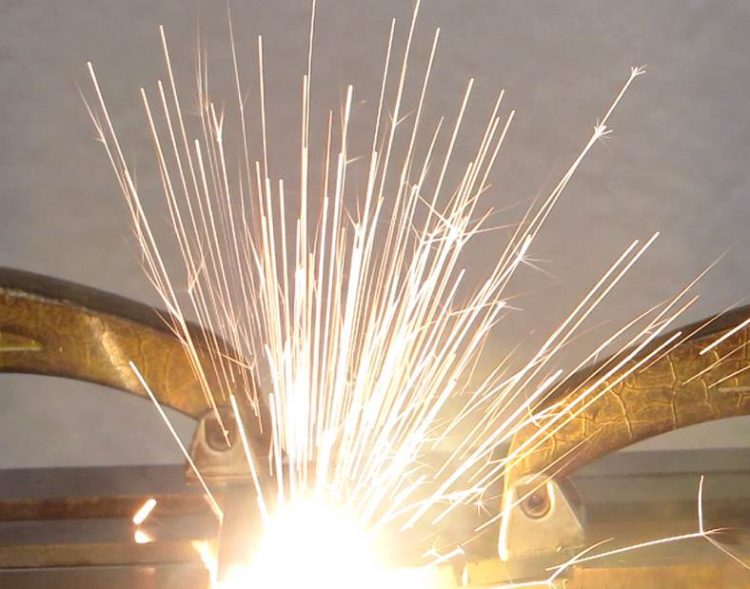Thick metal sheets for light ships: welding steel and aluminum

Laser welding of steel to aluminum. Photo: LZH
In times of scarce resources it is also important in the ship industry to lower fuel consumption and carbon dioxide output, in order to reduce the environmental impact. Already, components are being made using weight-reducing steel-aluminum constructions, such as ship hulls made of steel and superstructures made of aluminum.
In addition, such hybrid material constructions lower the center of gravity of the ship and thus stabilize it. At the moment, the different metals are joined using an adapter piece. This is done using explosive cladding, a complicated and cost intensive joining technology.
Joining steel directly to aluminum
The scientists and industrial partners of the joint project LaSAAS want to replace this adapter piece. For this purpose, the system manufacturers Precitec GmbH & Co. KG, Scansonic MI GmbH and TRUMPF Laser- und Systemtechnik GmbH are working together with the LZH to develop a laser processing head with a weld penetration depth control.
Using this, the LZH will develop a laser welding process under lab conditions that will later be tested in cooperation with the LASER on demand GmbH. Afterwards, the process will be transferred to actual applications with the semi-finished product manufacturers Druckguss Service Deutschland GmbH and Hilbig GmbH as well as the shipyards Fr. Lürssen Werft GmbH & Co. KG and MEYER WERFT GmbH & Co. In addition, the Fraunhofer Institute for Structural Durability and System Reliability (LBF) will examine the fatigue behavior of the seams, especially under the influence of corrosive media.
Controlling the weld penetration depth
Generally, when thermally welding steel to aluminum, brittle intermetallic phases occur, so that the seams can prematurely fail under stress. However, the weld seam characteristics can be optimized based on the mix ratio of the metals, respectively the weld penetration depth. Thus, the project partners plan on controlling the weld penetration depth by analyzing the spectral process emissions and short coherence interferometry.
If successful, the process can naturally become interesting for other branches which assemble large pieces, such as train coach or commercial vehicle construction, too.
The joint project “Laser Welding of Steel to Aluminum for Applications in Shipbuilding” (LaSAAS) is funded by the German Federal Ministry for Economics and Energy (BMWi), and supervised by the Forschungszentrum Jülich GmbH (PTJ).
Media Contact
More Information:
http://www.lzh.de/All latest news from the category: Machine Engineering
Machine engineering is one of Germany’s key industries. The importance of this segment has led to the creation of new university degree programs in fields such as production and logistics, process engineering, vehicle/automotive engineering, production engineering and aerospace engineering among others.
innovations-report offers informative reports and articles covering technologies such as automation, motion, power train, energy, conveyor, plastics, lightweight construction, logistics/warehousing, measurement systems, machine tools and control engineering.
Newest articles

A universal framework for spatial biology
SpatialData is a freely accessible tool to unify and integrate data from different omics technologies accounting for spatial information, which can provide holistic insights into health and disease. Biological processes…

How complex biological processes arise
A $20 million grant from the U.S. National Science Foundation (NSF) will support the establishment and operation of the National Synthesis Center for Emergence in the Molecular and Cellular Sciences (NCEMS) at…

Airborne single-photon lidar system achieves high-resolution 3D imaging
Compact, low-power system opens doors for photon-efficient drone and satellite-based environmental monitoring and mapping. Researchers have developed a compact and lightweight single-photon airborne lidar system that can acquire high-resolution 3D…





















